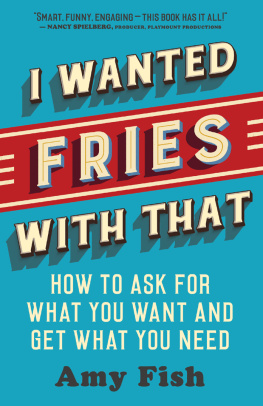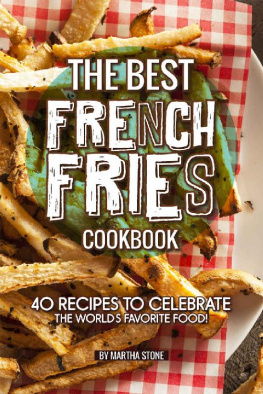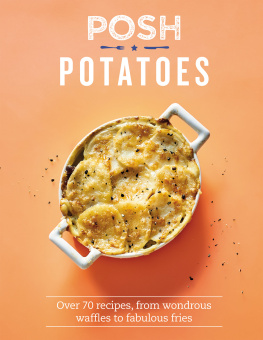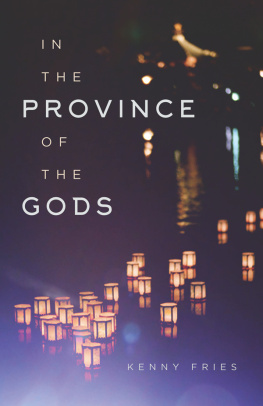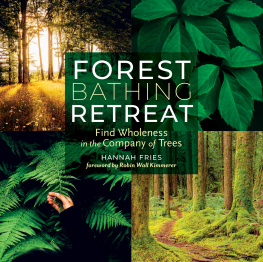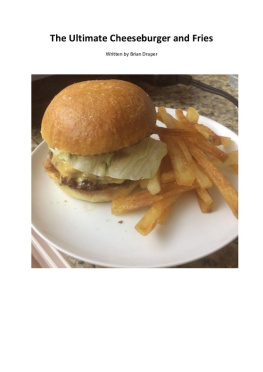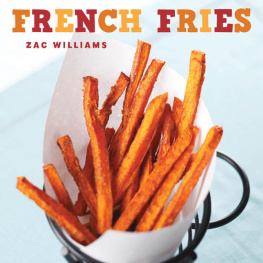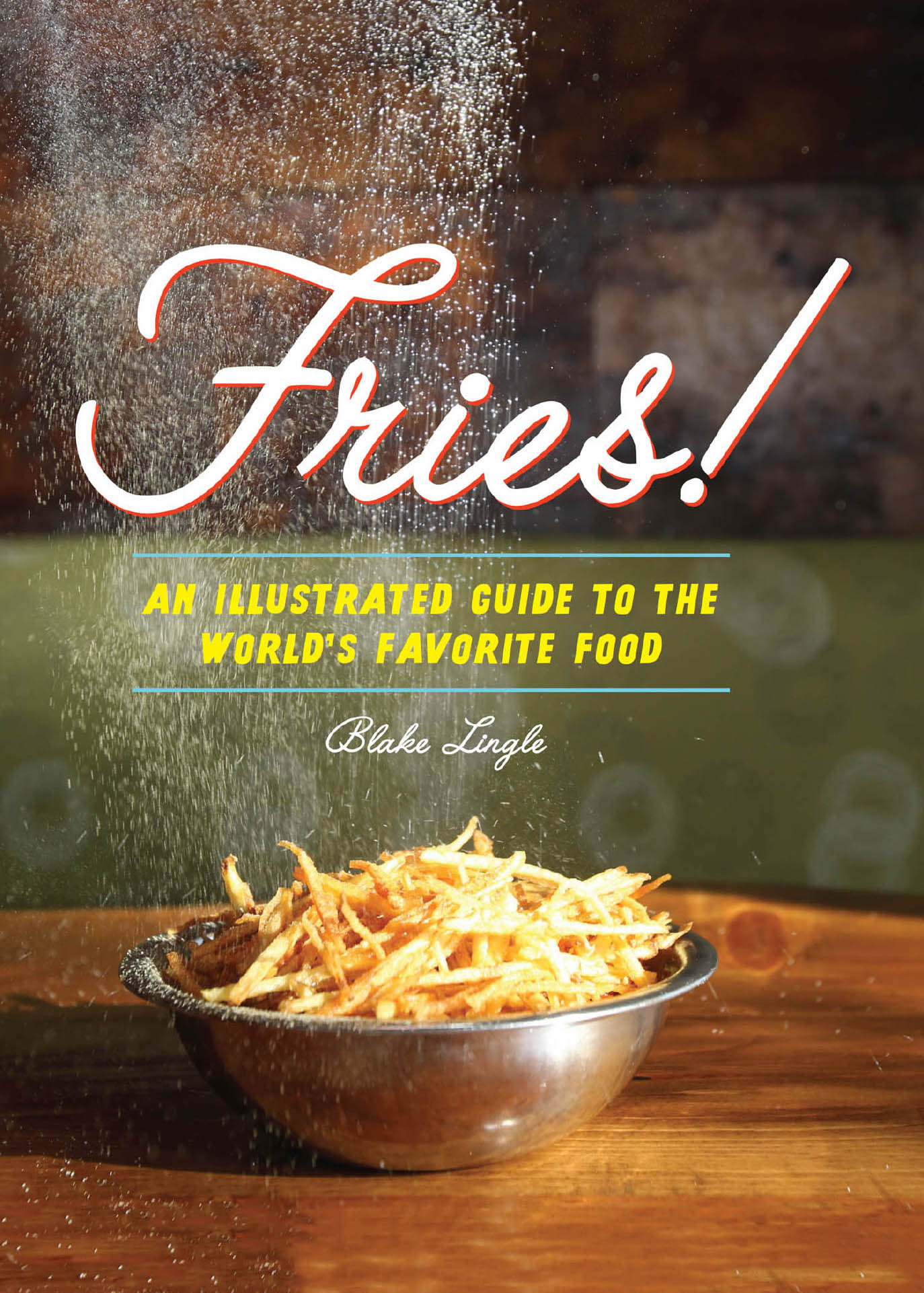



Contents




I DONT HAVE THAT ONE FRY MOMENT,
like my father and I cruising to the beach, sharing boardwalk fries, and then discovering pirate treasure upon burying our feet in the sand. Most of us dont have a single fry moment. We have fry moments.
Fries are everywhere, and as a child, I was equally concerned with devouring all fries and winning Nickelodeons Super Toy Run. McDonalds was my obsession, not only because its fries were as close to edible perfection as my noggin could imagine but also because toys accompanied the fries.
Not much has changed since I became an adult. Ive yet to meet a salad that dissuaded me from ordering fries with my meal. And while I dont ingest McDonalds fries much these days (not for reasons of morals, politics, or jealousy, though those reasons do exist), I do regularly consume fries. Three times per week on average. Mostly at the restaurant I cofounded and co-own, Boise Fry Co. ( BFC ).
Why fries? was the third-most-frequently-asked question when we started BFC in 2008preceded by Isnt this a bad time to start a business? and Dont restaurants always fail? (Folks often amaze me with their positivity.) My answer, which was also the impetus for this book: fries deserve their chance to be the entre.
Of course, that was and is an uninformed and insular response. Fries reached entre status centuries ago overseas and have grown in prestige stateside over the past few decades. Nevertheless, at the time I thought fries needed more attentionand still think so today. Sandwiches, burgers, and steaks have pushed fries to the side, relegating them to the same caste as house salads, coleslaw, baked beans, and dinner rolls (at least in my cranny of the pantry).
One persons cast-off is another persons treasure, however. Despite being the afterthought of many a meal, fries are a ubiquitous type of comfort foodthe transcendent food group that is scientifically proven to turn your gray skies blue.kidney if you claim okra is best fried in California, but if the French ever attempt to pilfer our corndog, that same Southerner will join you in armsand then well quickly win the war.
Comfort food brands an indelible mark on our brains. We crave and covet it, and well detour vacations and drain wallets to indulge in the best, if only to taste whether the best is better than a childhood memory. It has even graced the menus of some our fine countrys finest restaurants.
Most comfort foods are the star of the plate. Not fries. Fries have steadfastly and subserviently accompanied other entres without reservation or prejudice. They have shared the fryers with jalapeo poppers, cheese sticks, and hot wings. They are the proletariat of American foods.
But fries are about to revolt. Theyre discontented with their side-dish status. Theyre tired of carrying multibillion-dollar corporations such as McDonalds on their back. theyre considered an afterthought. Theyre ready to be the subject of a plate (and of this book).
WHAT IS A FRY?
Note that french is absent from this books title, for three reasons: one, as Ill discuss later, the French may not have invented the fry; two, in some of the earliest references to fries, french is used more as a verb than as an adjective; and three, call me superstitious, but I feel that pasting french to fries would surely cause this book to failand I would much prefer it to fail on the merits of my writing.
The definition of a classical fry is a potato cut into strips and deep-fried. Absent from this definition, yet implied, are the following modifiers: unadulterated for potato and served hot for the whole. The classical fry has five characteristics: unadulterated (not coated), made from potatoes, cut into strips, deep-fried, and served hot. In other words, breaded fries or potato chips would not be considered classical fries.
The contemporary fry challenges each of these characteristics:
- Unadulterated. Sodium acid pyrophosphate and beer regularly coat modern fries. Coatings help fries remain crispy and colorful.
- Made from potatoes. Sweet potatoes are common fries yet arent even distantly related to the potato. The potato is from the Solanaceae family and has tomatoes, chili peppers, and even tobacco as cousins. Sweet potatoes are from the Convolvulaceae family. Coating allows most any vegetablenot to mention Coke or Twinkiesto be fashioned into a fry.
- Cut into strips. Circles, spirals, cubes, wedges, cylinders, and tick-tack-toes are common fry shapes these days (see ). Were even working on a ring fry and a tube fry at BFC .
- Deep-fried. While most restaurant fries are deep-fried, most household fries are baked. Fries can also be grilled, barbecued, and fire roasted. Some form of cooking is necessary; raw potatoes are toxic.
- Served hot. Snacks like Pik-Niks and Whatafries are served cold, in cans and bags, respectively. (The question of whether these are fries at all is the Chip Conundrum, which Ill discuss below.)
Its difficult to define the contemporary fry. Yet for the sake of this book, Ill provide a definition anyhow. The contemporary fry is any vegetable, cut any way imaginable, coated with anything edible, cooked any way feasible, and consumed hot.
The above definition has two notable restrictions: vegetable and hot. I plan to stick to the botanical, not the culinary, definition of a vegetable. Thus, tomatoes, cucumbers, squash, zucchini, pumpkins, peppers, eggplant, tomatillos, chayote, okra, breadfruit, and avocadosall fruitwont count. Nor will legumes (which are sort of fruit anyway) such as green beans and snow peas, seeds such as wheat and corn, or fungi such as mushrooms and truffles. This also eliminates fried butter. As for hot, while I enjoy Chesters Fries as much as the next intoxicated person, Fries!, much like fries themselves, needs a little structure. It also provides an answer to the Chip Conundrum.
Potato chips are fries hate child: according to lore, disgruntled restaurateur George Crum invented potato chips in a fit of rage after a customer whined about his fries
Fries have evolved. The contemporary fry definition is valid only until we get to the last chapter of this book. Beyond that, only Demeter knows.... Fries will evolve beyond the limits of Fries! And this fry cook is stoked to try them.
WHY FRIES MAKE YOU HAPPY: THE JUNK PHILOSOPHY AND REAL SCIENCE
Why do we make fries? Because they make us happy. Why do fries make us happy? Because they do. Science need not corroborate this claim. The simplest reason is often the best reasonjust ask Occam and his razor. In the
Next page


